You may have heard the word “gleaning” before, or maybe you haven’t. In a world where people still suffer from hunger and malnutrition, it amazes me how much food is thrown away or let go to waste each and every day. I have worked in the food industry for many years, so I know first hand how much food is wasted, and it is absolutely sickening. Beyond restaurants and grocery stores, however, there are many plants and trees at this time of year that have a plethora of veggies and fruit going to waste. Combine that with the fact that locally grown, organic produce can be really expensive, gleaning is one way to get nutritious food into your home for no cost whatsoever. All you need is a good eye and a bit of common sense and you’ll have enough produce to last you a long while, especially if you preserve it.
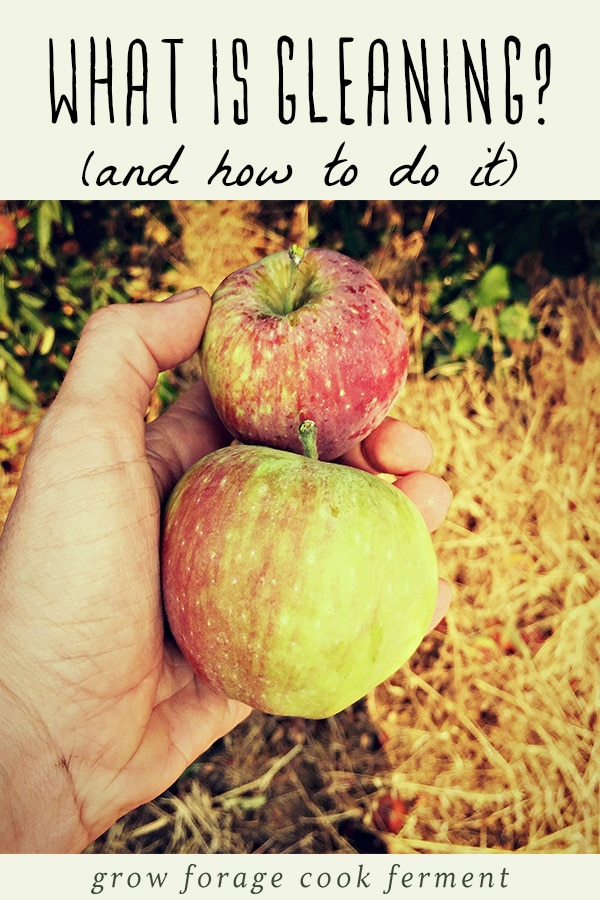
Want to save this post for later?
Wildcrafting Weeds
If you want to learn more about the edible and medicinal weeds that surround us and how to use them, check out my eBook: Wildcrafting Weeds: 20 Easy to Forage Edible and Medicinal Plants (that might be growing in your backyard)!
What is Gleaning?
First, let’s start with what is gleaning exactly?
Basically it means gathering bit by bit, and can be relating to either information or objects. But, it also has a historical meaning of gathering leftover produce after a harvest.
In this day and age, however, it is a term that is also used not only just for leftover produce, but for thrown away or totally unused produce (or even other food items, for that matter).
Dumpster diving can even be considered as a form of gleaning!
We live in Southern Oregon, where fruit trees are abundant. As we’ve been going about our business around town this summer, we have noticed and kept tabs on many trees that would potentially give us fruit.
Gleaning on Public Property
Now that fall is upon us, these trees are absolutely loaded. This is an apple tree that is right on the side of the main road through town.
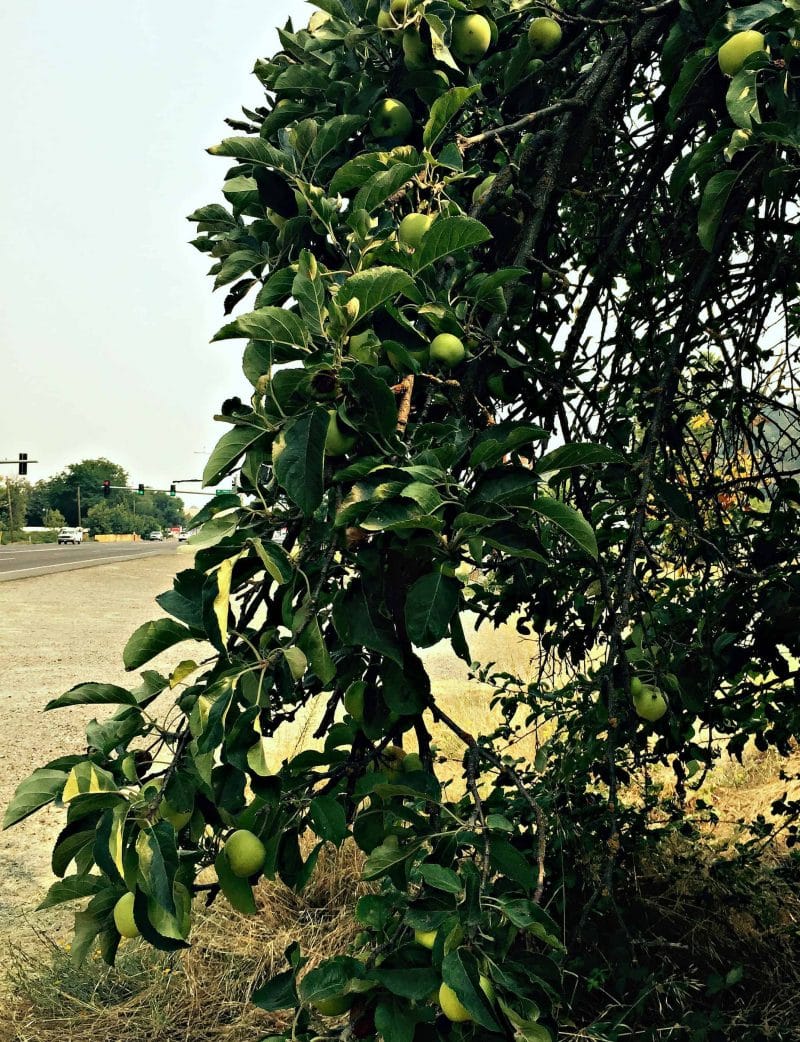
It has tons of apples on it, and while they are quite tart because the tree is probably some sort of wild crabapple variety (or a cross of some sort), they would be great for preserving or fermenting.
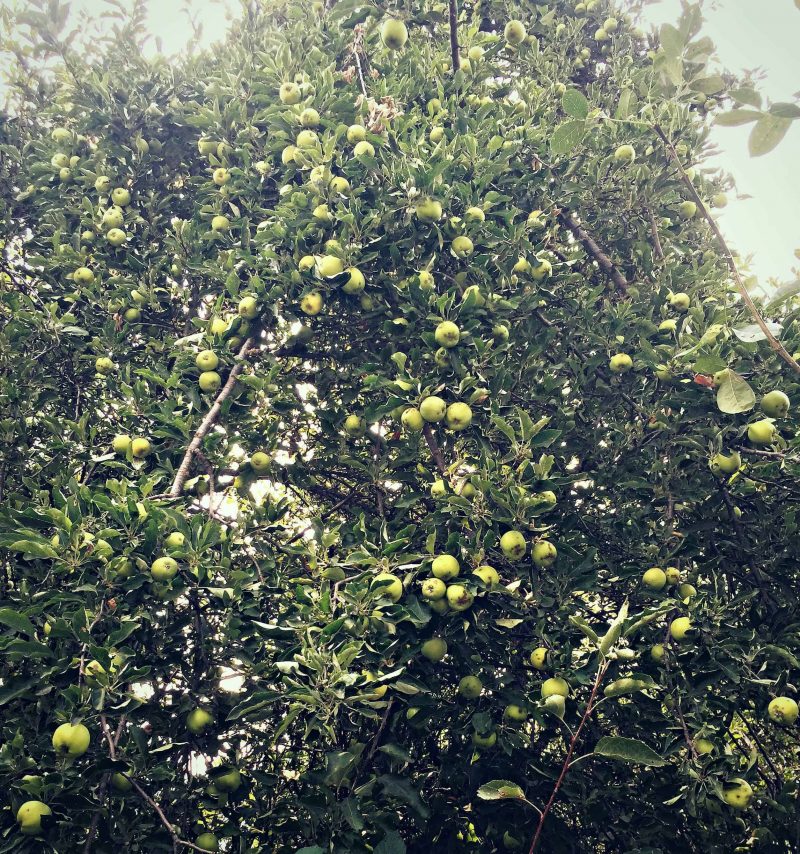
This is a totally safe tree to glean, because it’s not on private property. In fact, it’s on a public right of way, which makes it available to everyone!
Also, there were tons of apples all over the ground, which is the first sign of a neglected tree.
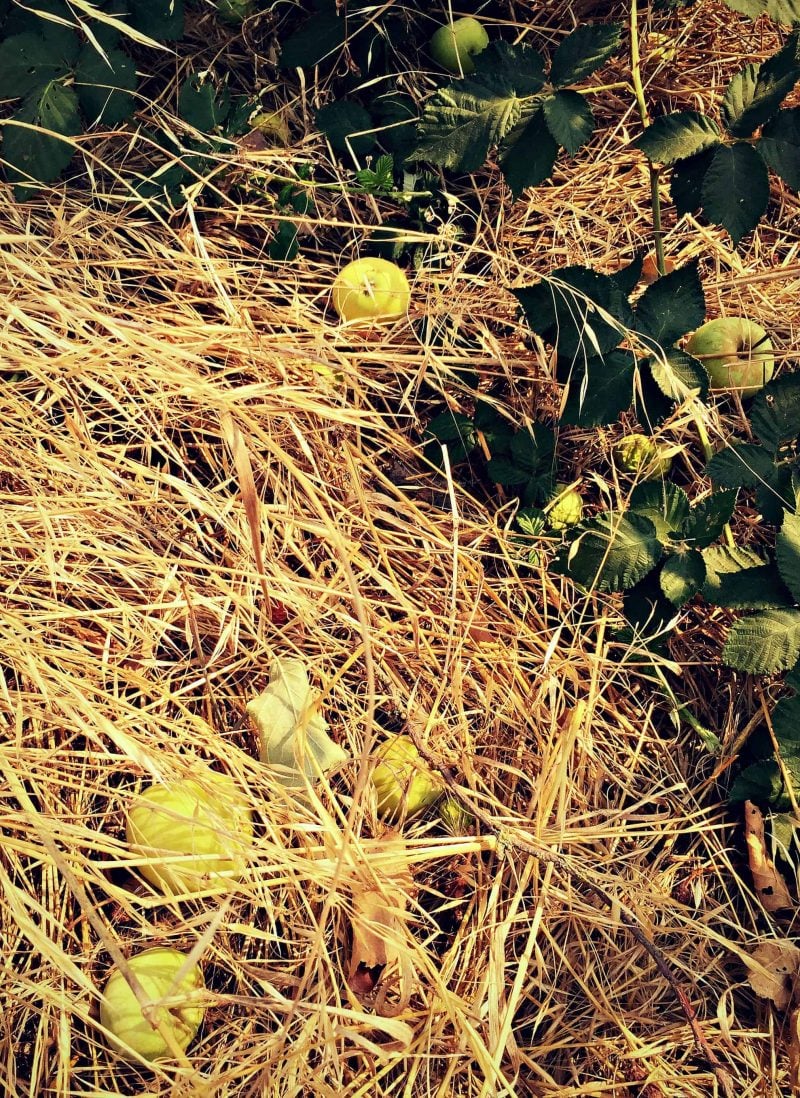
We’ve also been eyeing a huge fig tree in the neighborhood.
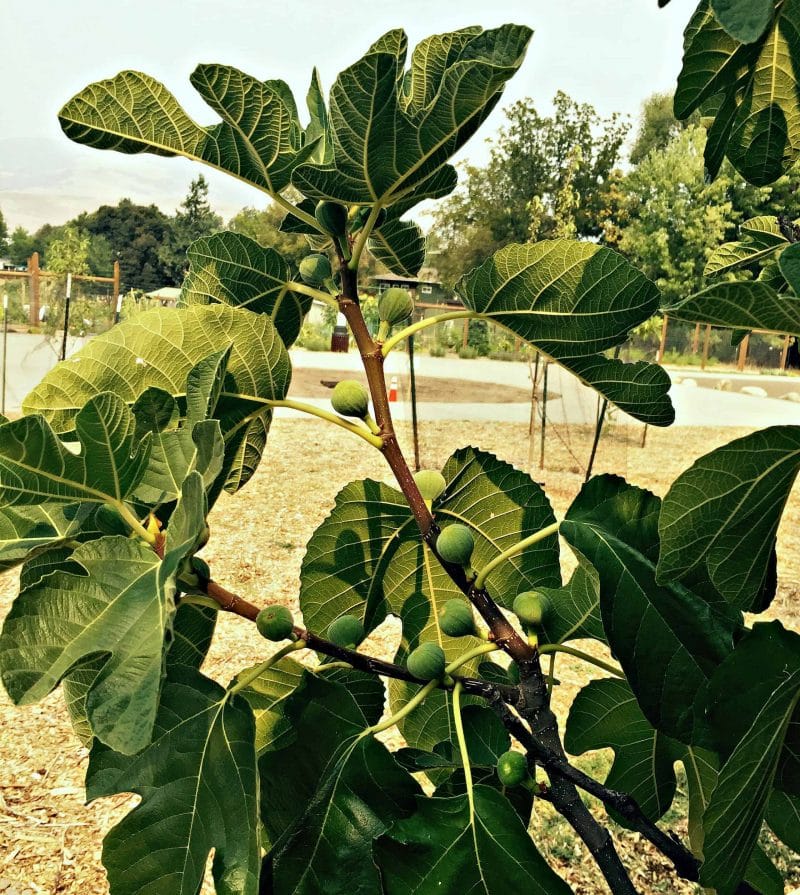
This tree is actually growing in a public park, so it’s also totally fair game for gleaning.
We’ve been waiting patiently for the figs to ripen to make my fig honey butter, and now they finally are!
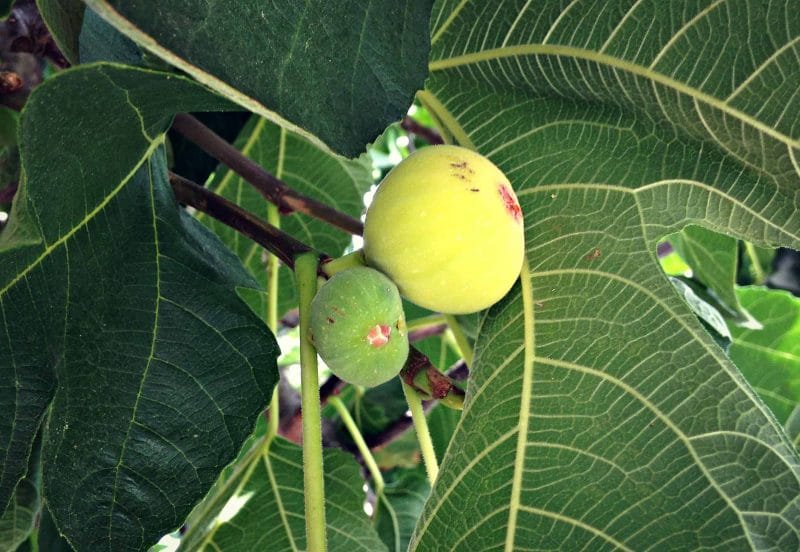
Joel stood on a fire hydrant to collect as many as he could reach!
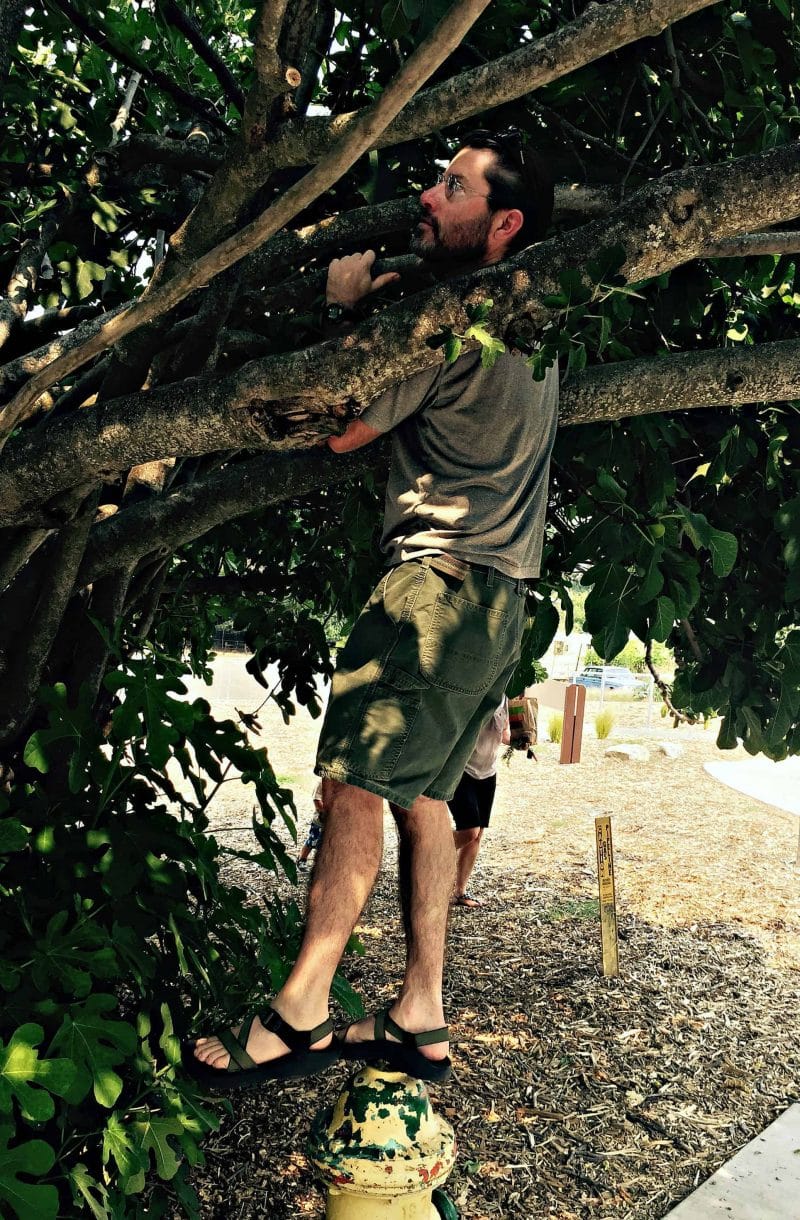
Gleaning Overflow Fruit on Public or Private Property
Another type of gleaning is when a fruit tree that is on private property is dropping fruit either onto public property (such as the sidewalk or street), or directly onto your property.
That is the case with this plum tree.
The tree is on the neighbors property, but it is clearly dropping fruit over the fence.
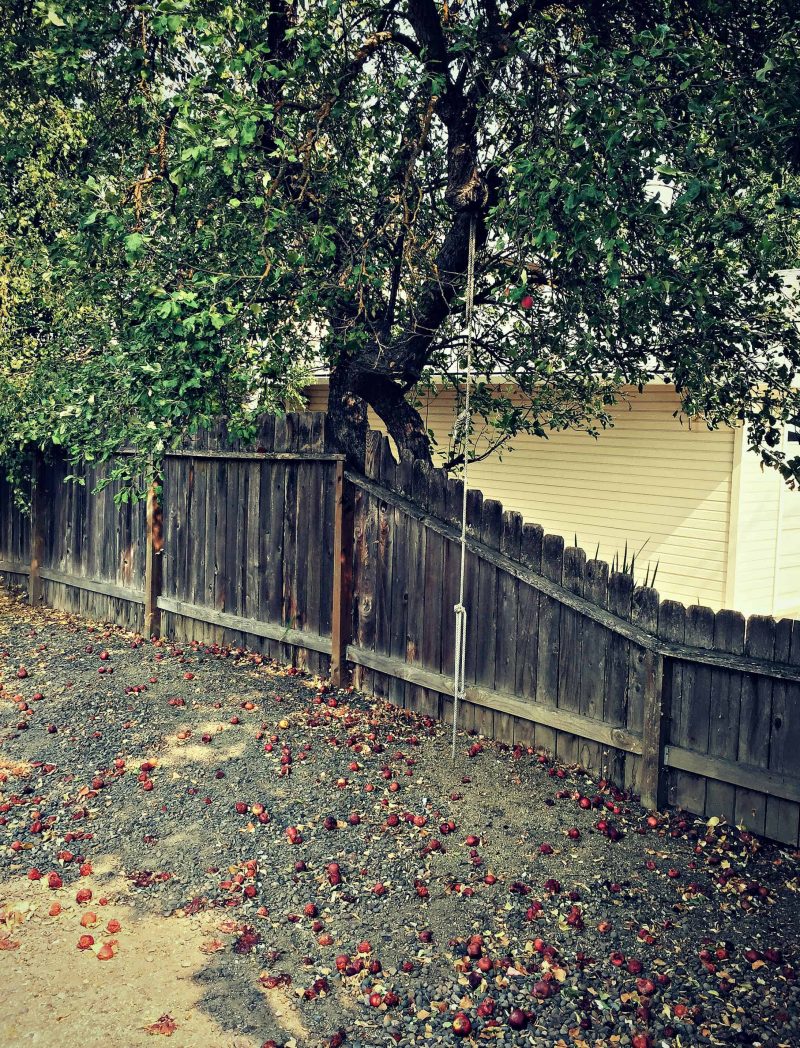
I’ve been walking through town and found tons of apples, pears and plums on the sidewalk and street. Totally gleanable in my opinion!
Gleaning on Unused or Neglected Property
Another place to glean is in abandoned or empty lots. You do need to be a little careful here, as it usually is private property and trespassing is considered a crime.
But, in spite of that, if you see fruit trees that are clearly neglected with fallen and rotten fruit, it’s probably safe to say that you can collect. Just proceed at your own risk!
This pear tree was on a bank owned property that we were viewing (great property, too bad the house had a bad foundation).
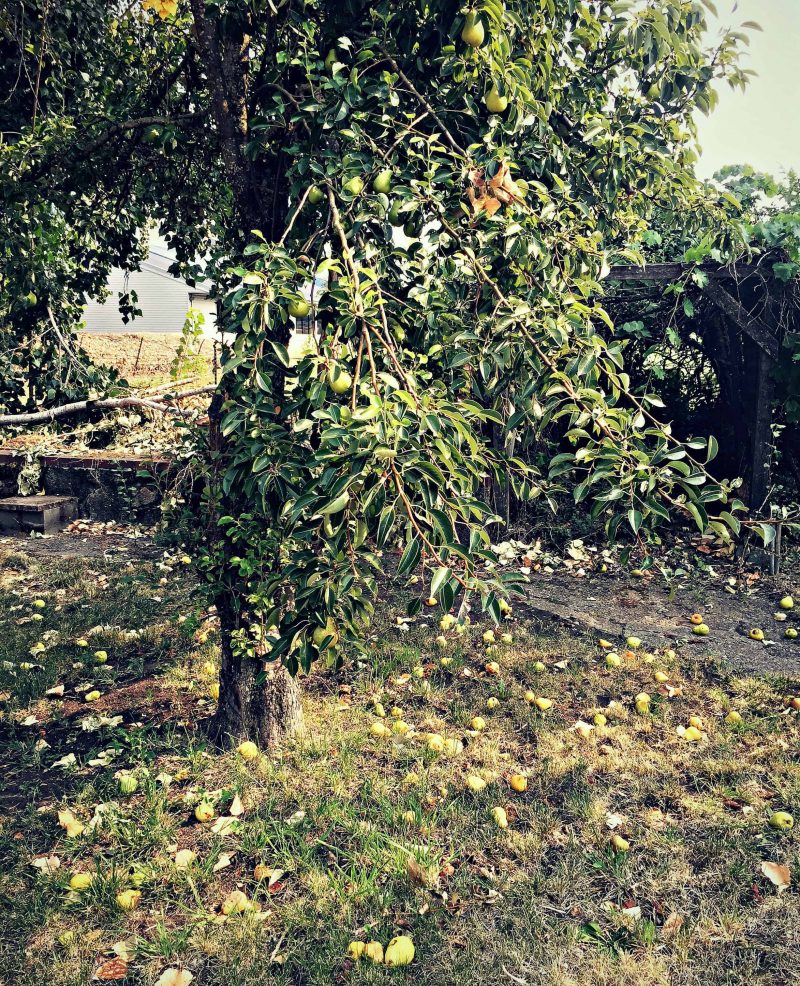
I doubt the bank was thinking about collecting those pears! We took some and used them to make a delicious pear and blackberry crisp.
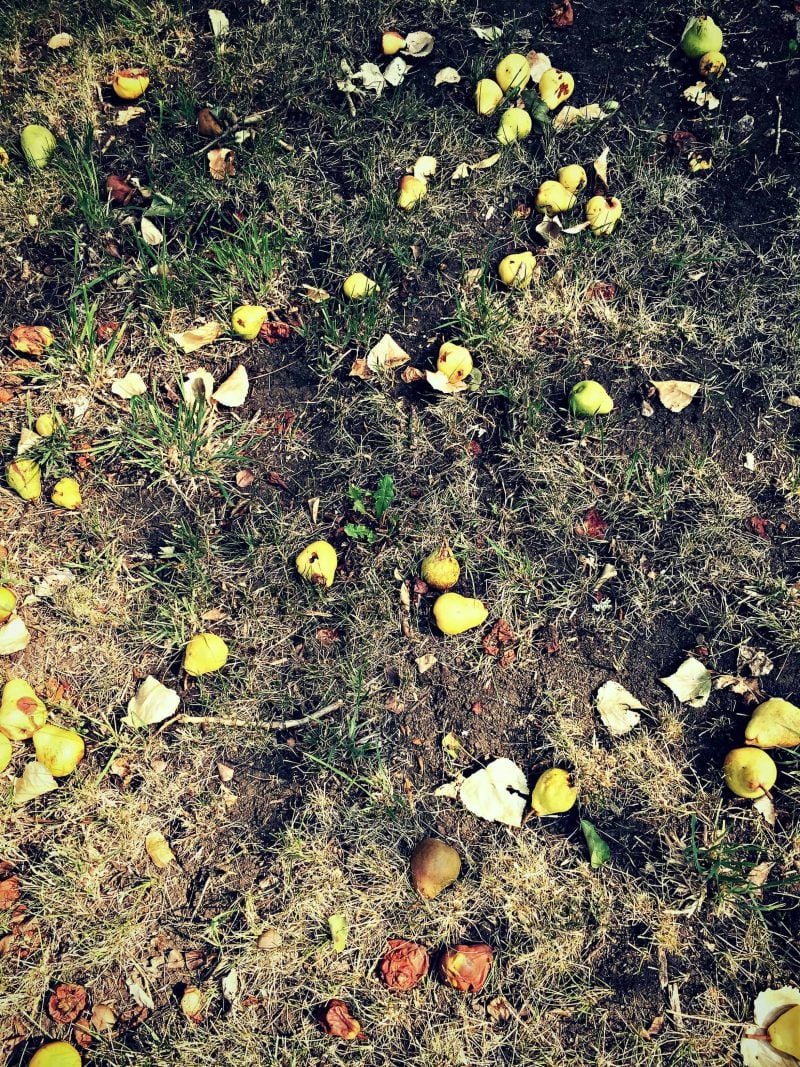
We also drove by an empty lot that had a very large apple tree in the corner.
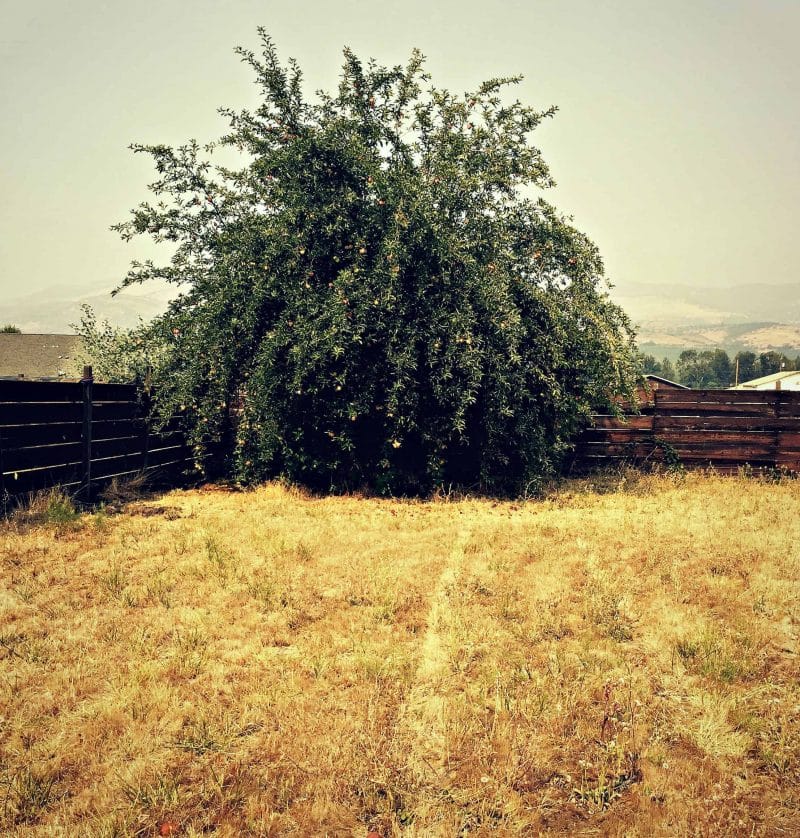
I’m sure that the lot was owned by somebody somewhere, but they definitely weren’t collecting the apples, so I took a few!
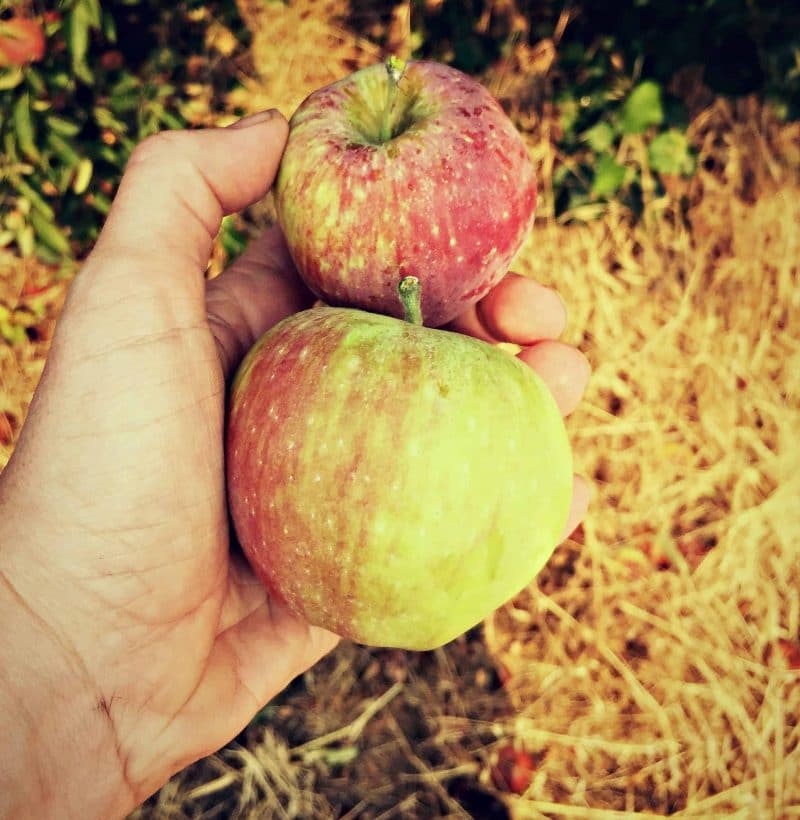
Basically, it’s my opinion that if food is going to be wasted or thrown away, then it is fair game for the taking.
You definitely need to be careful when dealing with private property, but if you see a lot of unused fruit somewhere, it’s worth considering whether you can glean it or not.
If it’s on private property that is occupied, talk to the owners and you never know… you may be doing them a favor by collecting all that fruit for them! Make some jam and give them a few jars, not only will you have made some new friends, but you may have gained a yearly bartering arrangement. Not a bad deal at all!
Of course, if it’s on public property, or if it’s dropping onto your own property, you can go for it!
I hope that gives you an idea about what gleaning is and how to do it. It’s something we all should be doing more of to not only help stop unnecessary food waste, but to get more locally grown and healthy food on our tables!
More Foraging Guides
Learn what food you can be gleaning through the seasons with our foraging guides!

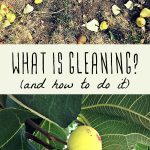

I have been wanting to set up a gleaning team to help get food to shelters and schools. This was helpful. I have heard that it’s not wise to pick up fallen fruits from the ground. Is there some truth to that? Thank you, Heide
That’s a dam shame all of that fruit is wasted every year. I wish I lived there. I would get your recipes and go on a cooking and fermenting rampage (hahahaha). Just goes to show you how much this country takes for granted.
There is an prune plum tree on an empty property 2 houses away from me that I’ll be paying a visit to and I know where there are 4 apple trees on an empty property that I also plan to visit
The sad thing about living in California is that foraging (Even gleaning!) is illegal. Depending on what and how much you collect, you could even get get a $1,000 fine and even go to jail for 6 months! People say California has “Too many,” foragers but California has soooooooo many plants that have so many medicinal values. So many people are illegally foraging for good reasons, I believe that sometimes laws need to be broken, in tis case it should. We have such a good bounty that goes to waste.
Look up Pascal Baudar, he’s a wildcrafter in S California and he never mentions illegality :)
I live in Sherbrooke, Québec, Canada, so here, there is no plum that big, nor figs, nor peaches. But there is a lot of apples! Also some plum and pears. I gleaned from trees I spot while running. I made hard cider and jam. It’s so sad to let it go to waste. Ps: I’m a little envious at the diversity you have!
There’s a pretty cool organization here called Harvest Sacramento. Volunteers glean thousands of pounds of fruit from yards all over the area. They have a database of people who have offered their trees and there are so many they can’t get around to all of them. A lot of people just don’t have the time, interest, or physical ability to harvest and use all that fruit. I’m glad some of it is going to good use at food banks and it would be great if every city could do something like this!
*Loved* this post. There are fruit trees in town here, and year after year, no one seems to do anything with the fruit. I’d be delighted to harvest it, clean up the grounds, process it, and donate a percentage to the local food pantry (though that then raises questions of food safety, for which no one would want to be responsible). In fact, when I read your article, my first thought was that so much gets thrown out over fears of food safety. A double-edged sword for our times.